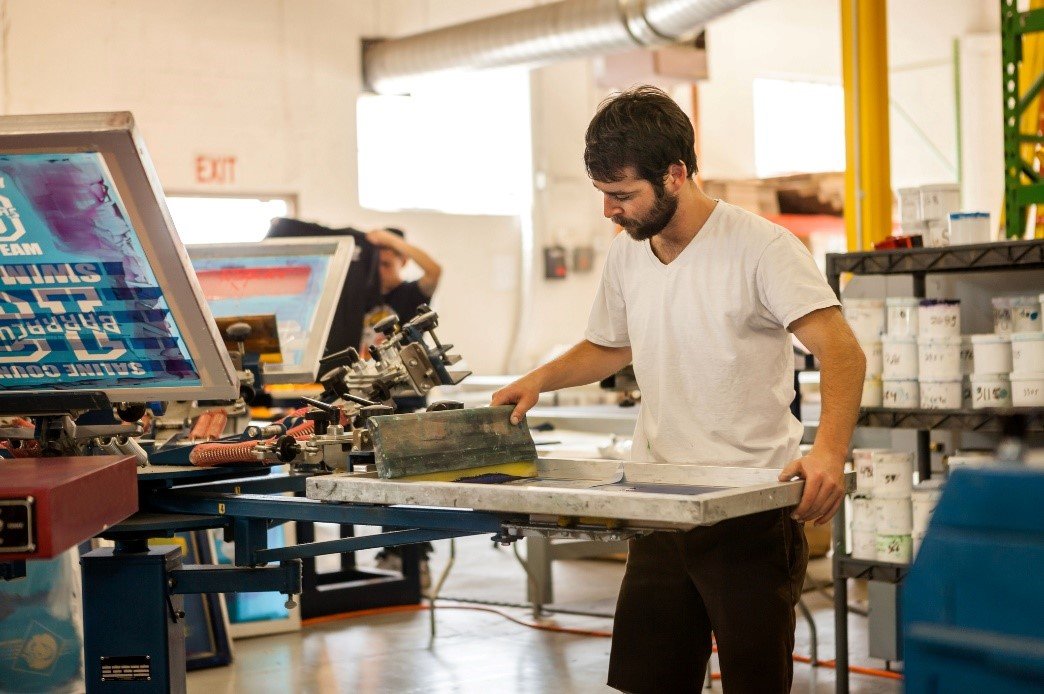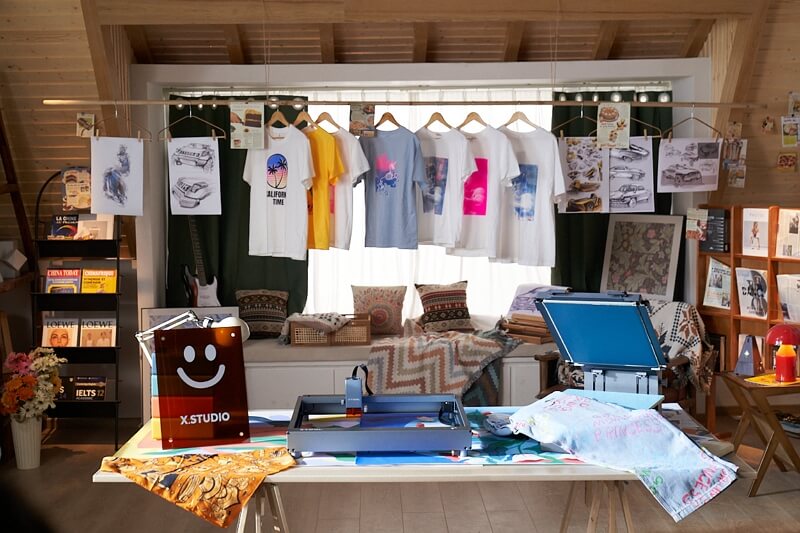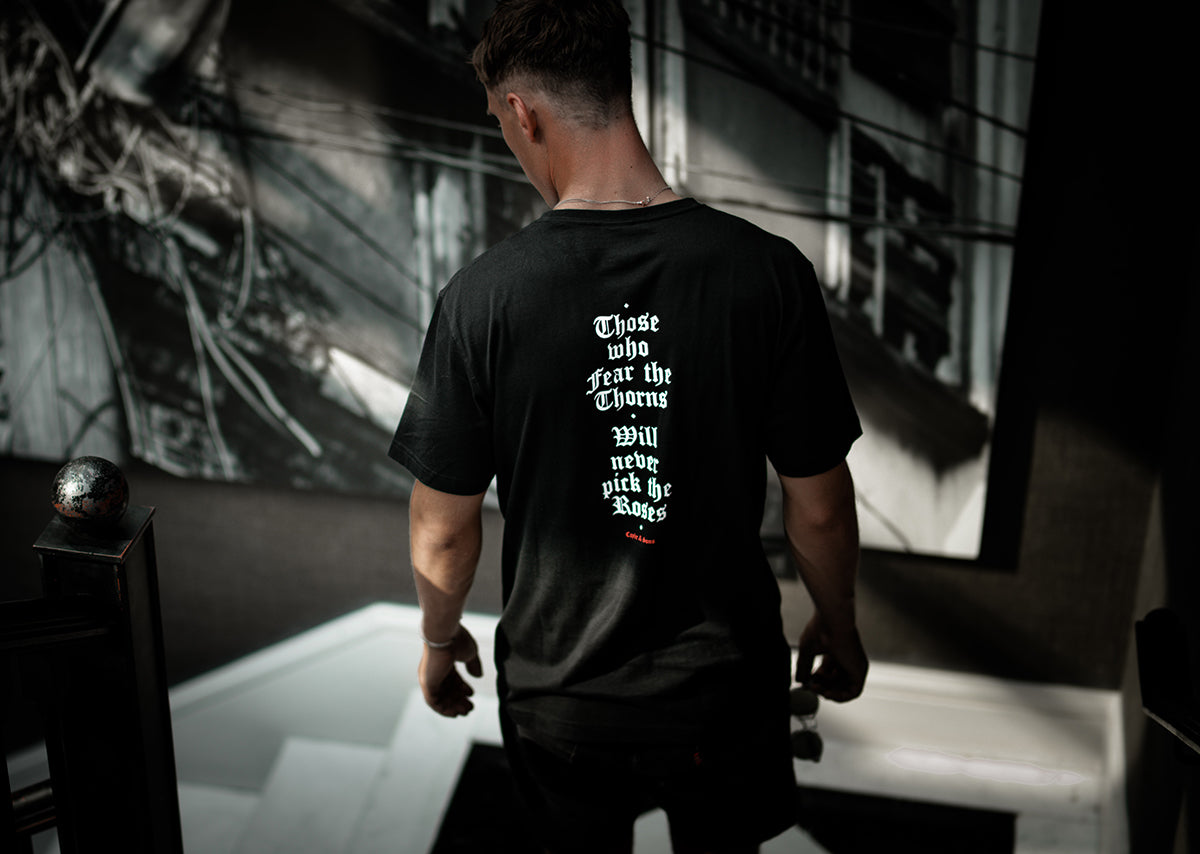Some Known Questions About Tx Tees.
Table of ContentsEverything about Tx TeesThe 10-Second Trick For Tx TeesRumored Buzz on Tx TeesLittle Known Facts About Tx Tees.What Does Tx Tees Do?Unknown Facts About Tx TeesGet This Report on Tx Tees
Include up other prices, like the number of utilities it takes to run the store and the expense of ink and solution per style. Take the print below.
The emulsion needs to only be a few cents given that you 'd only require to layer one screen for this job. Just how much should you bill per shirt to make a revenue? Usually, printers try to make up to 45% revenue on a print work. Here's a table to help you figure out that: complete cost per item percent of preferred revenue as a decimal (example:.25 or.45) profit made per item per job Now allowed's discuss the earnings of DTF.

With DTF, you can publish a handful of t-shirts, or just one. Both display printing and DTF have their niches in the world.
The Ultimate Guide To Tx Tees
The very best means to recognize? Ask about and see what print stores like your own are doing. embroidery shop. Attempt both out and see which you like better
When you're choosing what kind of printing approach to use for publishing your art work layouts on your garments, it's important that you understand the distinctions in between these two techniques so you can maximize outcomes while lessening costs. Screen printing is the most frequently utilized method for publishing styles on textiles.
DTG printing is likewise called area or straight to garment printing due to the fact that it prints only what is needed as opposed to making a screen as display printers do. https://www.anyflip.com/homepage/fjmtv#About. Display printing works by screen filler squeegee display printing ink display mesh screen, after that moving the image to garment utilizing warmth and/or stress
The DTG printer uses unique dye-sublimation inks that are applied right into a pre-designed picture by an electronic printing system. The inks enter into the fabric, enabling dynamic shades and remarkable information. It's likewise recognized as area or straight to garment printing since it prints only what is required rather than making a display as display printers do.
The Best Strategy To Use For Tx Tees
It's much faster - you can publish a fullcolor photo in minutes, as opposed to hours for screen printing. Second, there's no set up time or expenses included - you can publish any design you like, without having to produce a screen. Third, there's no waste - due to the fact that screen printers screen print one design at a time, they have to screen each color individually.
The paper is extremely costly and can only be made use of once. Once it's published on, it needs to be thrown out. - The first acquisition rate is less than the upfront financial investment of DTG printers- You can publish multi-color styles one display at once rather of needing to print each color individually like DTG printing.

Tx Tees Fundamentals Explained
Rather of using screen mesh as display printers do, color sublimation printers use laser modern technology to transfer your pictures onto garments or paper. A warmth process transfers the color from its solid-state directly right into the gas stage which consequently merges it onto fabric substrates when they are quickly warmed to heats under high stress.
Sublimation printing is eco-friendly. It uses less water than screenprinting, and due to the fact that it does not include making use of damaging solvents, it's secure for all kinds of apparel. The dye sublimation inks are additionally odorless when cured, unlike screen printers that utilize unsafe chemicals during the screen printing process that leave behind an unpleasant odor.
They also conserve cash on pricey devices like exposure devices considering that color sublimation printers do not need a UV direct exposure system or a flash treatment stove that is generally utilized in screen printing (custom cap printing). What is straight to garment printing (DTG Printing)? DTG printing is a digital screenprinting process that prints directly onto material utilizing specialized inkjet printers
Tx Tees Can Be Fun For Everyone
DTG printing provides numerous benefits over typical screenprinting, consisting of the capability to print photo top quality images, better color vibrancy, and the capability look what i found to print designs on darker fabrics. DTG printers function by heating up the fabric ink up until it develops into a gas. The gas then penetrates the material, bonding with the fibers to develop a permanent print.

Screen printers merely prepare their display after that begin printing up until they run out of item or ink.- There is a wide variety of seasoned screen printers all over the globe, which can be handy for newbies. - It's a slower procedure - display printers commonly need to await the ink to completely dry before they can print the next shade- Display printers call for manual work, so there's a greater discovering curve and it takes longer to produce a high-grade layout- Display printing isn't as precise as DTG printing, so you may obtain some "blood loss" of shades from one component of the image onto another otherwise done appropriately.
How Tx Tees can Save You Time, Stress, and Money.
However, rather than using display mesh as screen printers do, dye sublimation printers make use of laser innovation to transfer your photos onto garments or paper. A heat procedure moves the dye from its solid-state straight into the gas phase which consequently fuses it onto fabric substratums when they are rapidly heated up to heats under high pressure.
Sublimation printing is eco-friendly. It makes use of less water than screenprinting, and since it does not involve the usage of harmful solvents, it's secure for all kinds of clothing. The color sublimation inks are also odor-free when treated, unlike display printers that use dangerous chemicals during the screen printing process that leave behind an undesirable smell.
They also save cash on expensive equipment like exposure systems given that color sublimation printers don't need a UV direct exposure device or a flash cure oven that is normally made use of in screen printing. What is straight to garment printing (DTG Printing)? DTG printing is a digital screenprinting procedure that publishes straight onto textile using specialized inkjet printers.
The Ultimate Guide To Tx Tees
DTG printing uses lots of advantages over traditional screenprinting, consisting of the ability to publish photo top quality photos, better shade vibrancy, and the ability to print designs on darker textiles. DTG printers function by heating up the textile ink until it turns into a gas. The gas then permeates the textile, bonding with the fibers to develop an irreversible print.
Comments on “The Main Principles Of Tx Tees”